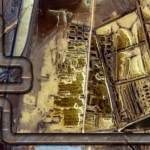In the barren desert northeast of Qatar lies a place that seems almost otherworldly—Al Jassasiya. First identified in 1957, this archaeological site holds nearly 900 rock carvings that defy easy explanation.
Among these are the most striking of all: two rows of seven dents carved neatly into the stone, like mysterious fingerprints left behind by an ancient hand. Their symmetry raises questions—who made them, and why? The desert air carries silence, broken only by the imagination of visitors and the soft crunch of sand underfoot.
For Qatar, these markings are not just relics; they are windows into a history that still resists clarity, balancing between the known and the unknown. As one researcher put it, “Each dent is a question carved into stone.”
Location and Historical Background of Al Jassasiya
The site sits on the northeast coast of Qatar, roughly one hour’s drive from Doha. Unlike the glimmering skyscrapers of the capital, Al Jassasiya stands in sharp contrast—a landscape where sand dunes meet limestone terraces, and where humans thousands of years ago left their mark.
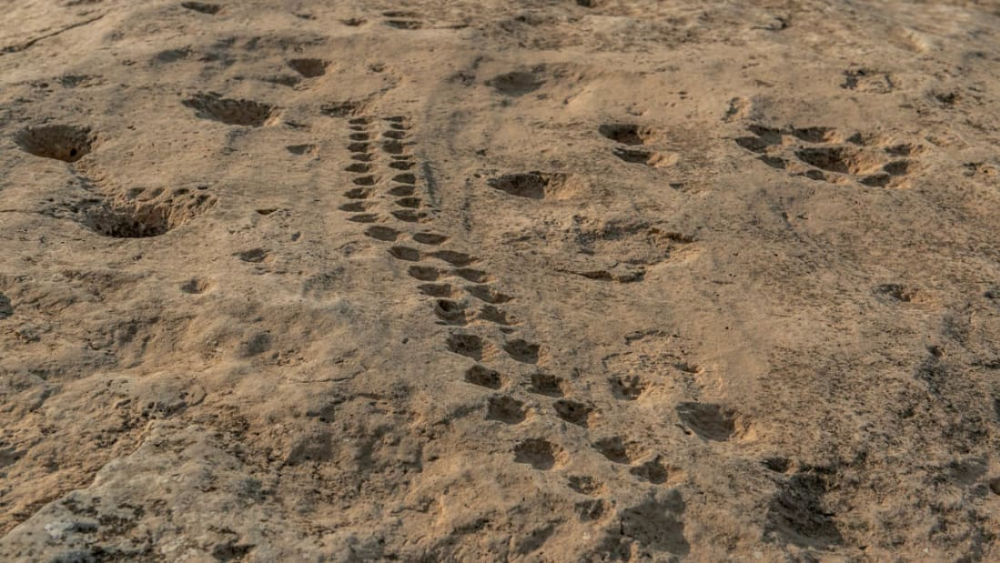
When the site was discovered in 1957, few could have predicted its importance. In the 1970s, a team of Danish archaeologists systematically documented every carving, revealing patterns and complexity that went far beyond simple scratches.
Al Jassasiya is just one of 12 known rock art sites in Qatar, but it is by far the richest. With nearly 900 carvings, it serves as an unparalleled archive of human creativity on stone, suggesting centuries of use, cultural interaction, and mystery.
The Nature of the Parallel Dents and Carvings
Walking across the limestone, visitors encounter shapes carved with precision: circles, flowers, arrows, fish-like forms, and above all, the iconic parallel dents.
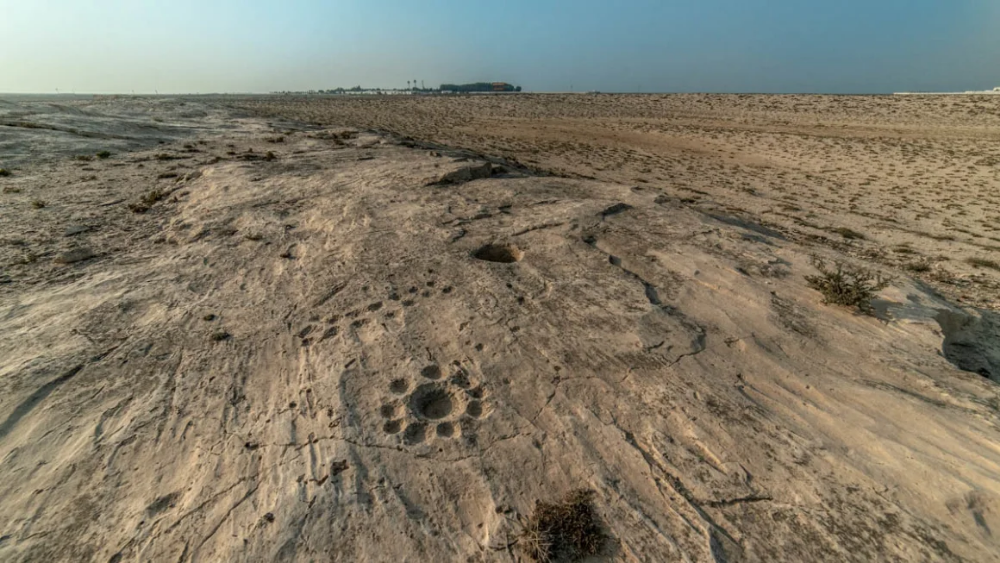
These rows of small depressions resemble game boards, yet they seem impractical for play when found on sloping rock. Other carvings depict boats, complete with ribs, seating areas, masts, and anchors.
Some anchors appear in the triangular stone style of Arab tradition, while others mimic European iron designs introduced some 700 years ago.
This suggests cultural contact and exchange across seas. The sheer variety of patterns—abstract and figurative—distinguishes Al Jassasiya from similar sites in Arabia, making it unique in its expression of both artistry and utility. Still, no definitive interpretation has been confirmed.
Theories About Their Purpose
Why were these dents carved? Scholars have long debated their meaning. Some propose they were gaming boards similar to the African and Middle Eastern mancala.
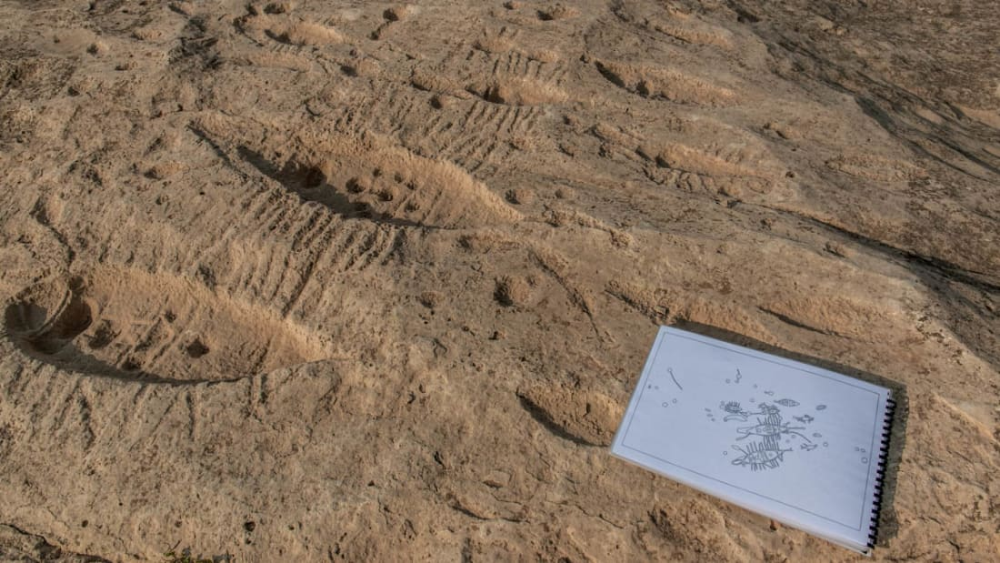
Yet skeptics argue that their placement on slopes or their tiny size make play improbable. Others suggest practical purposes: a system for pearl sorting during Qatar’s pearling boom, or a calendar to track tidal shifts vital to fishing communities.
A more spiritual interpretation points to ritualistic or ceremonial functions, perhaps aligning with cosmic or religious symbolism. Without written records, the truth remains elusive. Each theory holds fragments of plausibility, but the absence of certainty adds to the allure—these dents guard their secrets well.
Symbolism of Boats and Maritime Heritage
Among all carvings, the boats stand out as the most revealing. Carved with surprising detail, they feature rows of oars, central masts, and even anchors.
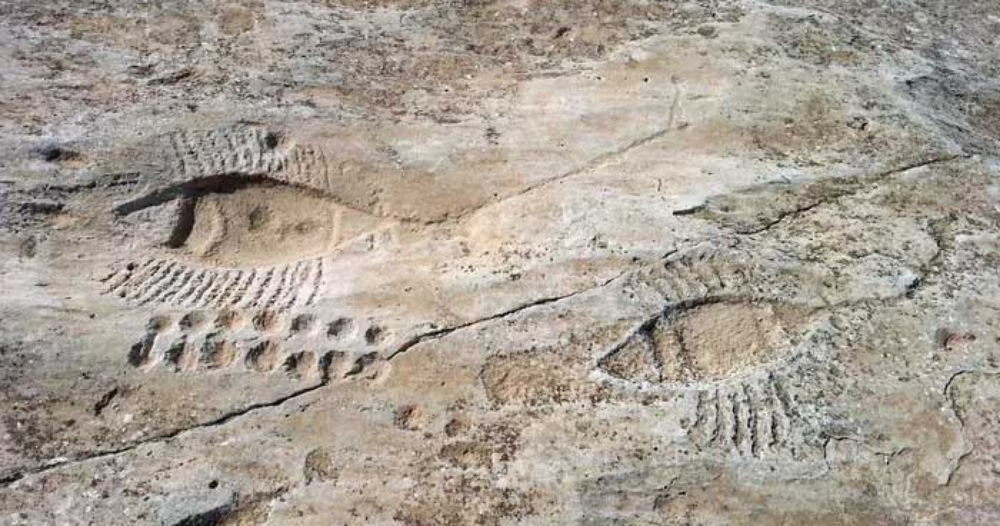
Their forms recall Qatar’s history as a maritime hub, where fishing and pearling sustained entire communities. The presence of both Arab and European anchor designs speaks of contact with distant sailors, suggesting that Al Jassasiya may represent a meeting point of cultures.
Symbolically, boats often transcend their material function. In many ancient civilizations, they carried souls from one life to the next. The Babylonian dead crossed waters toward the afterlife; Egyptian tombs contained boat models to ensure safe passage; Greek myth spoke of Charon, the ferryman on the Styx. At Al Jassasiya, these boats may whisper of journeys not just across seas, but across realms.
Cultural and Mythological Connections
The carvings draw invisible threads between Qatar and the wider ancient world. Mythologies from Babylon, Egypt, and Greece all feature the motif of the boat as a vessel of transition.
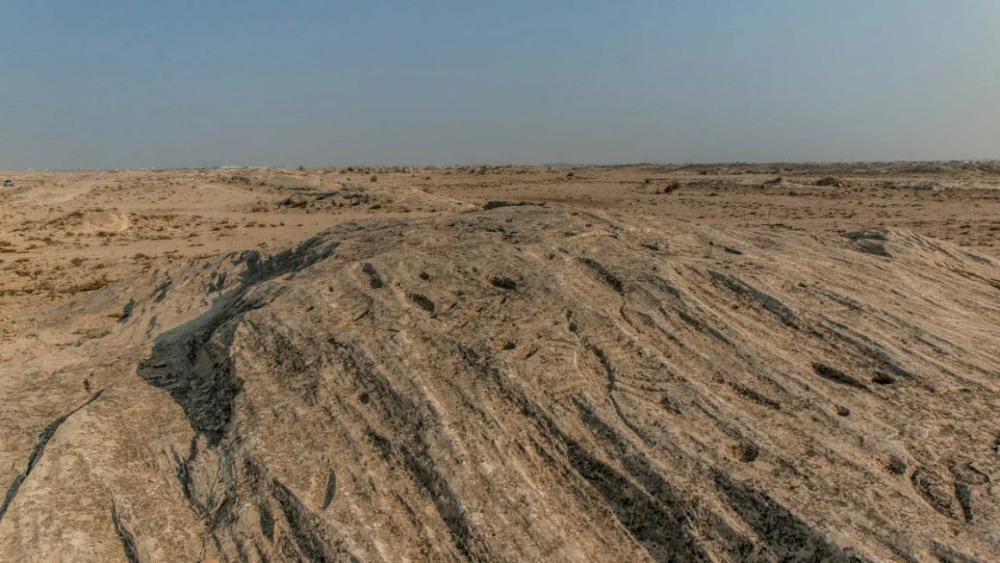
Could the people who made these carvings have shared a similar worldview? The possibility of shared or parallel traditions is tantalizing. Scholars Frances Gillespie and Faisal Abdulla Al-Naimi, in Hidden in the Sands, argue that Al Jassasiya captures folk memory stretching back to prehistory.
When visitors stand before the stone-carved boats, they are not just looking at art, but at echoes of belief systems that once spanned continents. In this sense, Al Jassasiya is more than an archaeological site—it is a bridge between Qatar’s desert and the mythological imagination of civilizations long gone.
Chronology and Dating Challenges
Determining when the carvings were made is a challenge that continues to puzzle researchers. Some believe they date back to the Neolithic, while others argue for Islamic-era origins. One study of nine carvings suggested they were only a few centuries old, a relative newcomer compared to early theories.
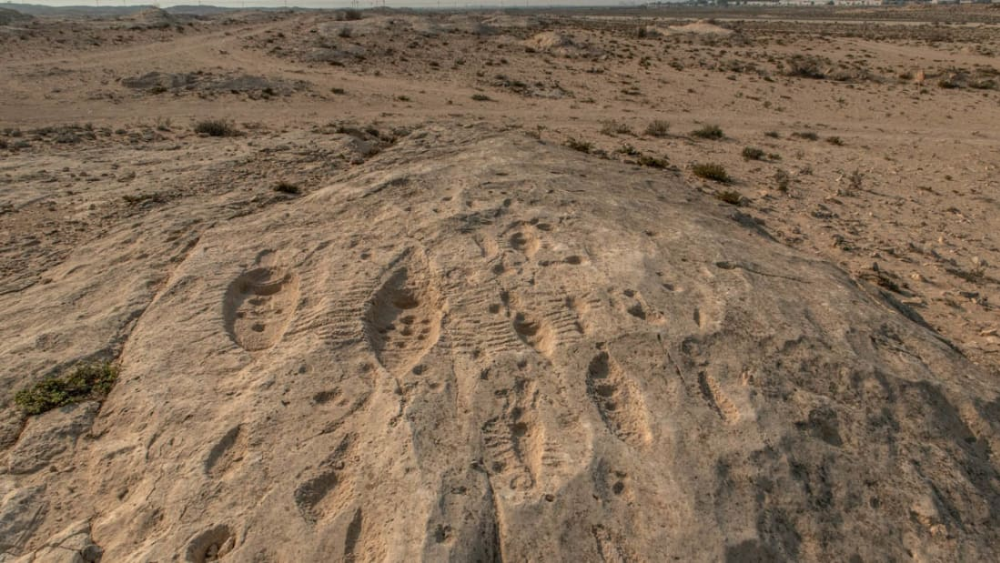
This disparity highlights a fundamental problem: stone carvings resist precise dating methods. The lack of organic materials means radiocarbon dating cannot be applied directly, leaving scholars to rely on stylistic comparison and contextual evidence.
The result is a timeline stretching across thousands of years, with no consensus. For now, Al Jassasiya exists outside of time—its age as mysterious as its purpose.
The Role of Al Jassasiya in Qatar’s Identity
For Qatar, Al Jassasiya is both a heritage site and a cultural emblem. Institutions like the National Museum of Qatar preserve and interpret its significance, while archaeologists such as Ferhan Sakal continue to study its mysteries.
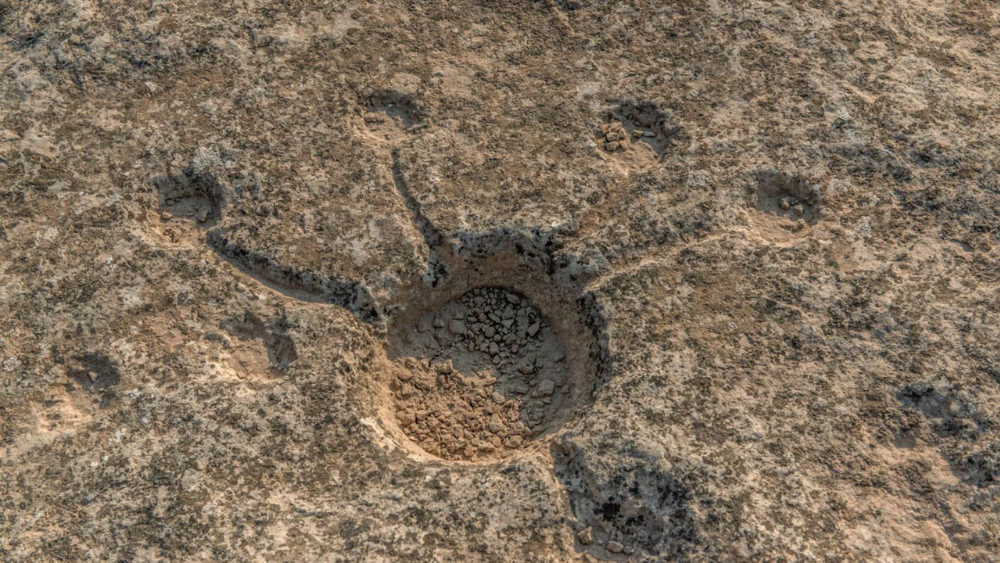
It plays a role in shaping national identity, linking modern Qatar to a past that was maritime, ritualistic, and enigmatic. Literature, such as Hidden in the Sands, brings these carvings into public consciousness, ensuring that they are not forgotten.
In a country known for rapid modernization, Al Jassasiya is a reminder that Qatar’s history stretches deep into the desert and the stone beneath. For education, for tourism, and for heritage, the site is a cornerstone.
Visiting Al Jassasiya Today
Visitors today can reach Al Jassasiya within an hour from Doha. The best times are dawn and dusk, when the sun softens the desert’s harshness and shadows reveal the contours of the carvings.
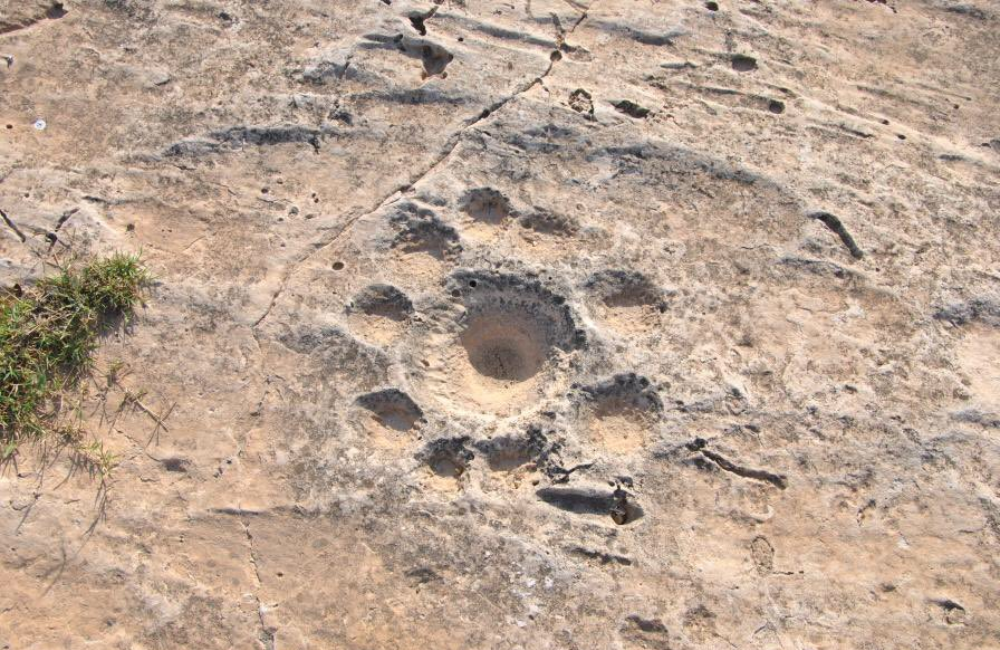
There is no shade, so water, hats, and sunscreen are essential. Standing on the limestone plateau, one feels both exposed and connected—exposed to the vast emptiness of the desert, and connected to a human past carved in enduring stone.
The parallel dents, the boats, the anchors, all remain as silent storytellers. Each visitor leaves with more questions than answers, but perhaps that is the point. Al Jassasiya is not a puzzle to be solved, but a mystery to be lived.




